TENOR INSIGHTS WITH BOGDAN VOLKOV, LYRIC TENOR
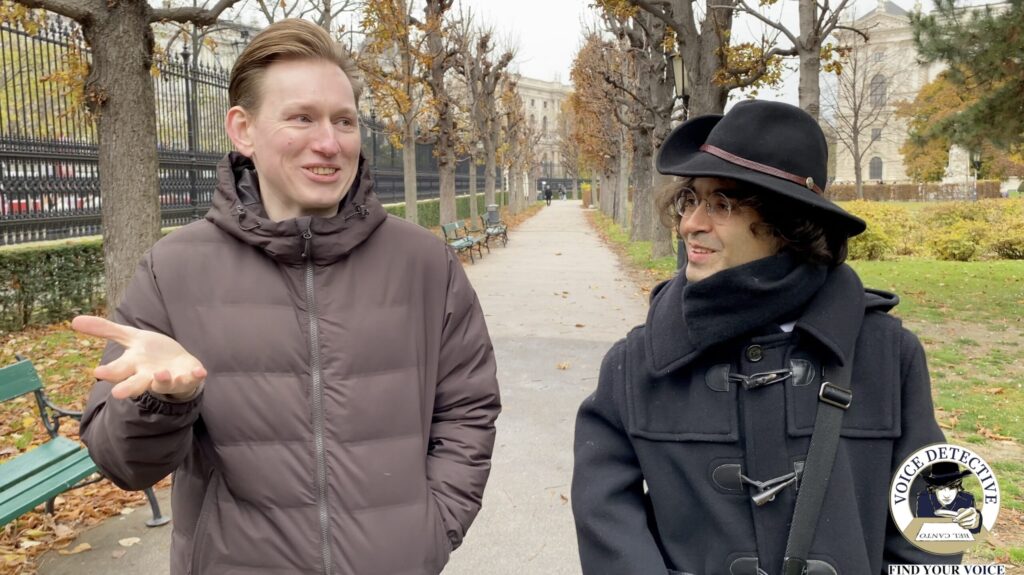
Bogdan Volkov is no stranger to all the leading international opera houses. His fine tenor voice reminiscent of the greats in line and tonal beauty has assured him his place as one of the of the most sought after tenors of his generation.
After graduating from the Glier Kyiv Institute of Music and the Ukrainian National Tchaikovsky Academy of Music, Bogdan joined the Young Artists Program of the Bolshoi Theatre in Moscow later becoming a member of it ensemble.
Before becoming part of the ensemble of the Berlin State Opera in 2022 and 2023, Bogdan had made his debut at the Berlin State Opera as Don Antonio in Prokofiev’s Betrothal in a Monastery under Daniel Barenboim in 2019.
The Salzburg Festival in 2024 saw his portrayal of Prince Myshkin highly acclaimed in Weinberg’s multi-award winning premiere of The Idiot. For this role he was nominated for the Austrian Music Theatre Prize, named Discovery of the Year and awarded the Best Vocal Performance in a leading role by the German magazine Der Opernfreund and recognized as Singer of the Year by Opernwelt.
Recent seasons have brought him major acclaim as Don Ottavio in Don Giovanni and Ferrando in Cosi fan tutte at the Vienna State Opera where he recently celebrated his 50th performance in a variety of leading roles.
Successes as Tamino in Die Zauberflöte, Alfredo in La Traviata at the State Opera of Berlin, as Lensky in Eugene Onegin at the Teatro Real in Madrid and the State Opera of Hamburg, Ferrando in Christof’s Loy’s new staging of Cosi fan tutte, presented at the the centenary edition of the Salzburg Festival have put Bogdan firmly on the vocal map and consolidated his position as a singer actor of recent times not to be missed.
GEORGES THILL TENOR, DECEMBER 18, 1897
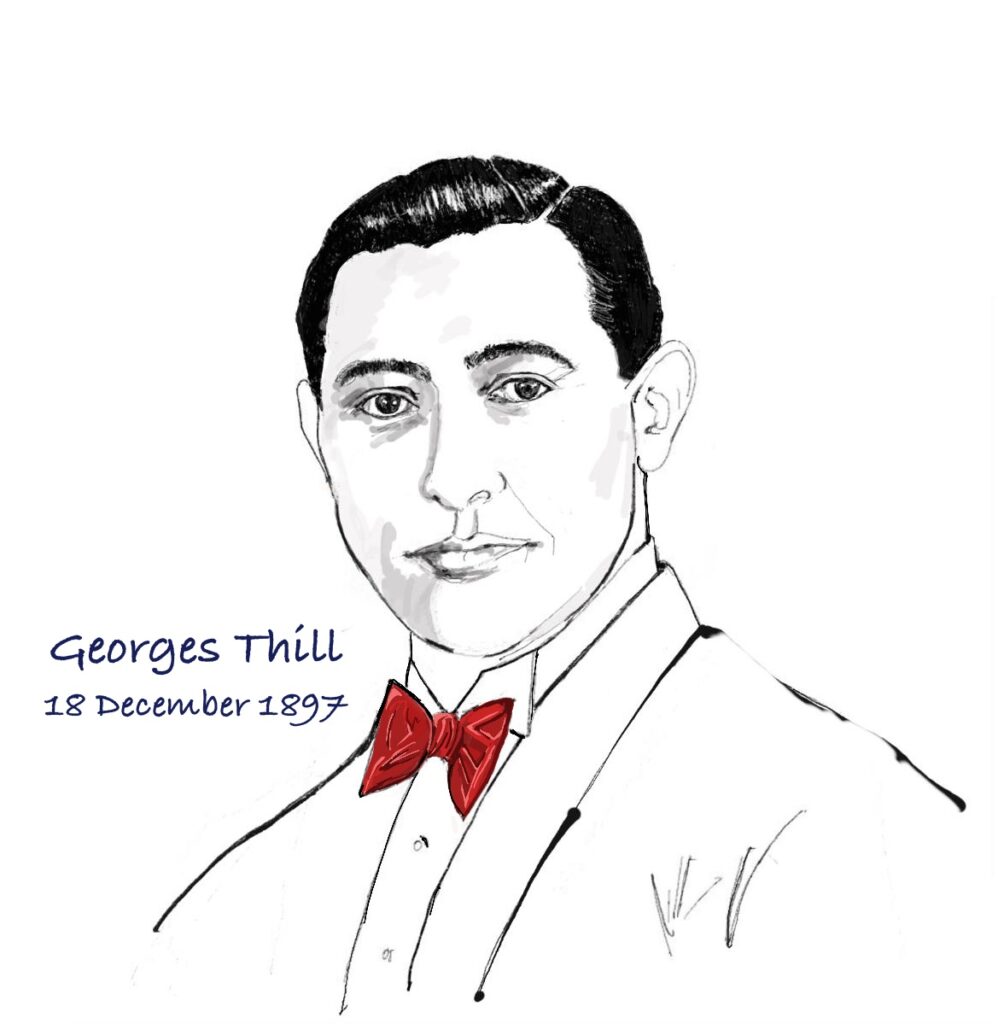
Georges Thill is arguably the greatest French operatic star of the twentieth century. It must be indisputable that in the 1920s and 30s he was the leading French classical and operatic singer.
He was born on 18 December 1897, the son of a Parisian publisher. Although he liked to sing from an early age, and gave private and impromptu demonstrations Georges did not initially consider a career as a professional singer. He later noted that, he had memorised two arias by Enrico Caruso from Tosca and I Pagliacci using a musical automaton, even though the arias were played at the wrong speed, making his voice sound too high. It wasn’t until November 1918 as the First World War ended that he undertook seriously studying music; first at the Paris Conservatoire under the bass Andre Gressé, (who incidentally sang the role of Sancho Panza to Chaliapin’s Don Quichotte at the world premieres of Massenet’s opera of that name in Monte Carlo in 1910) and then, most importantly, from 1921 in Naples under the great bel canto tenor, Fernando de Luca. It was de Luca who recognised Thill’s talent and developed it. Thill always acknowledged his great debt as an artist to de Luca, imparting breath control, remarkable clarity of diction, exceptional legato, and strengthening his lower range, which lacked stability. Indeed it was to be the rare combination of French diction combined with a flawless bel canto technique that distinguished him from other singers.
Returning from Naples, Thill was engaged immediately to sing Don José in Carmen, and other French roles at the Opera- Comique in Paris before making his debut at the Opera Garnier in 1924 as Nicias in Massenet’s Thäis. He remained at the Opera Garnier for 16 years, singing more than 50 roles. He also appeared at the Metropolitan Opera in New York in 1931 and 1932, as well as at the Royal Opera, Covent Garden in London and at the Vienna State Opera. Needless to say, it was in French roles that he is most remembered, his Sanson, Don José, and Romeo. However, his vocal ease, stability, and colour meant that he was an acclaimed performer of heavier Italian and German repertoire; not least the roles of Canio, don Carlo, Calaf, Lohengrin and Parsifal – which may give an idea of his range, power, and versatility.
In June 1934 he was involved in a serious motor accident which resulted in an enforced break from his Herculean schedule until December of that same year. By the time he retired in 1956 he had performed nearly all the standard repertory roles of French and Italian opera in addition to some of the Wagnerian operas that he loved so much. His repertory was simply amazing. He was equally at ease in the works of Bach and Gluck as well as in the contemporary works of Rabaud, Canteloube and Guinsbourg which he helped create.
His voice has been described as possessing a, ‘brilliant sound… heroic, smooth, and elegant…, (with) impeccable taste, perfect phrasing, and precise diction. In a video interview with a much younger colleague, she recounted that even though Thill expounded the credo of ‘sing as you speak’, Thill’s natural speech delivery was not typical of the usual French articulation. His was by nature a lot more Italian in its production.
Less well known is his film career, which included Louise in 1939 based on Gustave Charpentier’s eponymous opera.
After the Second World War he sang solely in his native France. His last operatic performance was as Canio at the Opera Comique where his stage career had all started. There was a final concert appearance in 1956 at the Théâtre du Châtelet. Thill spoke very candidly about the rigours of his career and it seemed with relish that he left it to become a farmer and vintner. After retiring to southeast France he remained in the public eye but never was tempted to perform.
We are fortunate to possess many recordings of GeorgesThill. He was an exclusive Columbia label artist and much of his repertoire has been preserved including French language versions of Italian roles.
In his personal life, Thill has been described as friendly, elegant, and exceptionally handsome with a great physique.
GIACOMO LAURI-VOLPI, TENOR, DECEMBER 11, 1892
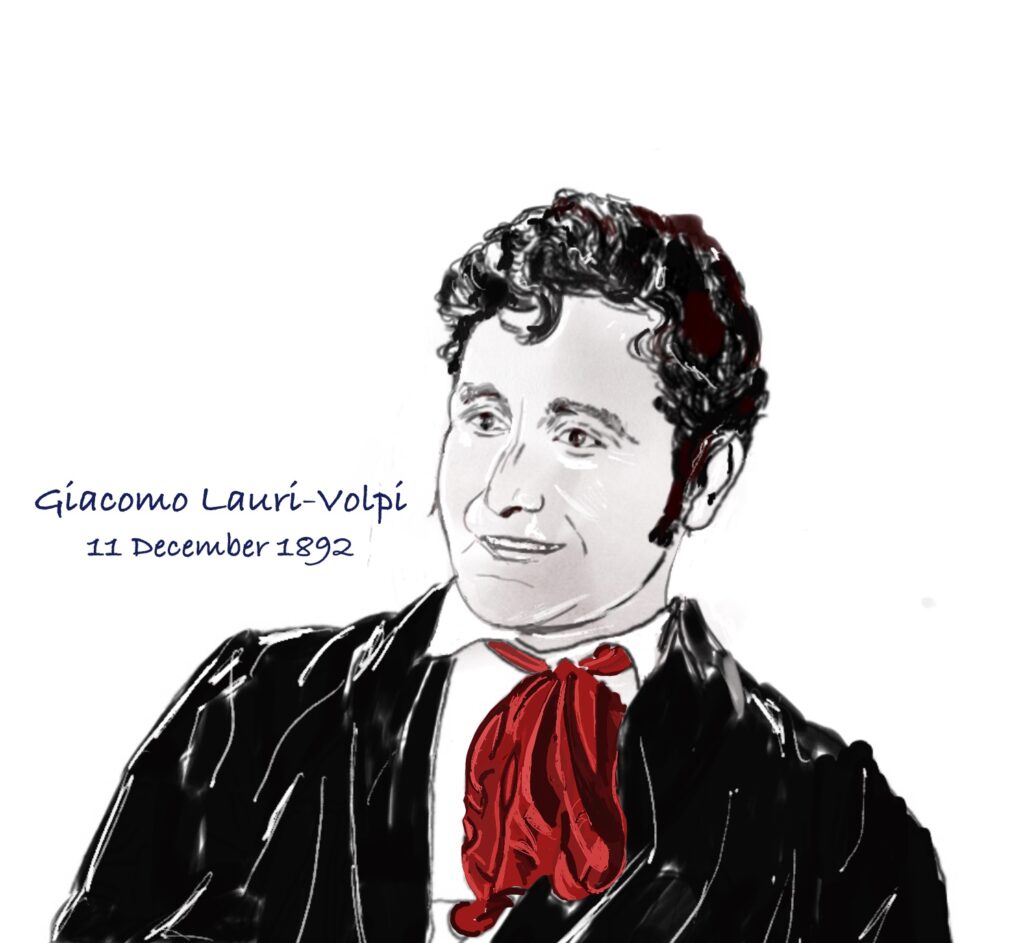
‘Lauri-Volpi was Dick Johnson, and his ‘Ch’ella mi creda’ was sung as a lament that tore me apart. I had never heard it done that way, and I suppose I never shall again. There will never be a tenor like him; he was a law unto himself, but blessed with flashes of magic.’ Maria Carbone
A law unto himself aptly describes the tenor Giacomo Lauri-Volpi; a human being in the fullest sense of knowing his own mind and never afraid to rattle feathers. But this is only half the story. His exceptional vocal talent and gifts made him, along with Martinelli and Gigli, one of the true heirs to Caruso. As Henry Pleasants once wrote: ‘…had there never been a Caruso, [each of these three] would have been a candidate for recognition as the greatest tenor of the century thus far. They had strikingly distinctive voices: … Lauri-Volpi’s less beautiful than Gigli’s, but with a persuasive sensual quality and an exultant top that made the Turandot arias and the last act of Andrea Chénier unforgettable.’
Born in Rome on the 11 December 1892, after studies at the Accademia di Santa Cecilia in Rome with baritone Antonio Cotogni who had also taught Jean de Reszke, Giacomo Lauri-Volpi debuted in 1919 in Viterbo as Arturo in I Puritani. At his debut he appeared under the name of Giacomo Rubini, an act of homage to one of his great tenorino forbears, Giovanni Battista Rubini, who had specialised in early bel canto and especially the works of Bellini. As a sign of Lauri-Volpi’s intellectual originality it should be borne in mind that Rubini had been dead for 65 years. If not for the First World War, his debut may have come sooner, as he joined up and became a ‘much-decorated infantry captain, at one point stunning the Austrian enemy into silence by singing while the Italian army replenished its ammunition.’ He seems to be the exception as an Italian tenor in that his army career came before his singing!
After appearing as Rubini, he next sang under his own name in Rome in 1920 as Des Grieux in Manon.Two years later he was already singing at La scala, and one year after that in 1923, he became a regular at New York’s Metropolitan Opera until 1933 where he was to sing 26 roles in 232 performances. Lauri-Volpi was the first American Calaf in Turandot, Other major roles he undertook with great success were Manrico, Radames, Cavaradossi, Duca and most surprising of all for a lyric-spinto tenor, Otello. ‘His 1942 La scala performance [of Otello] was criticised by those who would have preferred a conventional robusto interpretation, but his supremely confident and characterful vocal intelligence brought a unique dramatic sensitivity to the part.’ Despite his open support of, and patronage by, the Mussolini government, and his joining up to fight in the Second World War where he achieved the rank of Colonel, his career flourished post-war. To his great credit he was an early supporter of Maria Callas recognising in her a great artist and he sang I Puritani with her in 1952, a full ten years after the Otello.
His idiosyncrasies are legend. John Potter noted that, ‘Lauri-Volpi was one of the truly original singers of the first half of the twentieth century. Apart from his year of study with Cotogni he was to all intents and purposes self-taught…. He took a similarly unfashionable attitude to composers’ scores, having no qualms about interpolating ornaments and cadenzas, especially if it gave him opportunities to demonstrate his effortless soprano E. This was not something that endeared him to Toscanini, whose adherence to the written notes would always be an unacceptable constraint to singers brought up in the old tradition.’ He could be an annoying colleague, especially when he held on to his effortless high notes. Added to this he appears to have been irritated by Gigli’s beautiful voice, but then again, not without a sense of humour. Stella Roman relates that in La Bohème ‘once in Rome gave me a good laugh when he suggested I sing ‘lauri e fiori’ instead of ‘gigli e fiori.’ I changed the text to satisfy him, and he was as pleased as a child.’
And how do we assess his five volumes of thoughtful and intelligent commentaries on singing? He ‘listened to his colleagues both attentively and sympathetically, and in the book(s) he always finds something interesting to say.‘ He continued singing and performing into old age, with barely diminished vocal powers. ‘At the age of seventy-nine he sang the Love Duet from Madama Butterfly with Montserrat Caballé, and in Barcelona crowned ‘Nessun dorma’ with a top B that stunned all hearers. At the age of eighty-four he offered the second verse of ‘La donna é mobile’, cadenza and all, to a wildly cheering crowd, both of these latter events being preserved on record…’
This great, unique, supremely intelligent and annoying, individual – how can his long, distinguished career and life be evaluated? He was without doubt one of the very greatest performers. Iva Pacetti nicely sums up this man of many seasons, ‘If Lauri-Volpi had a good evening, he topped everyone. I remember an Aida we sang together in Barcelona as one of the most nerve-racking experiences of my life. He ended ’Celeste Aida’ in falsetto, and the hissing that went on was frightening. This put the fear of God in all of us, as it meant it was one of those bloodthirsty audiences. Then in the great concertato of the second act he was astonishing, and in the third act he was so inspired he made me cry, which is never good while one is singing.’
Giacomo Lauri Volpi died in Barcelona in 1979 at the age of 87.
CONCHITA SUPERVIA, MEZZO-SOPRANO, DECEMBER 09, 1895
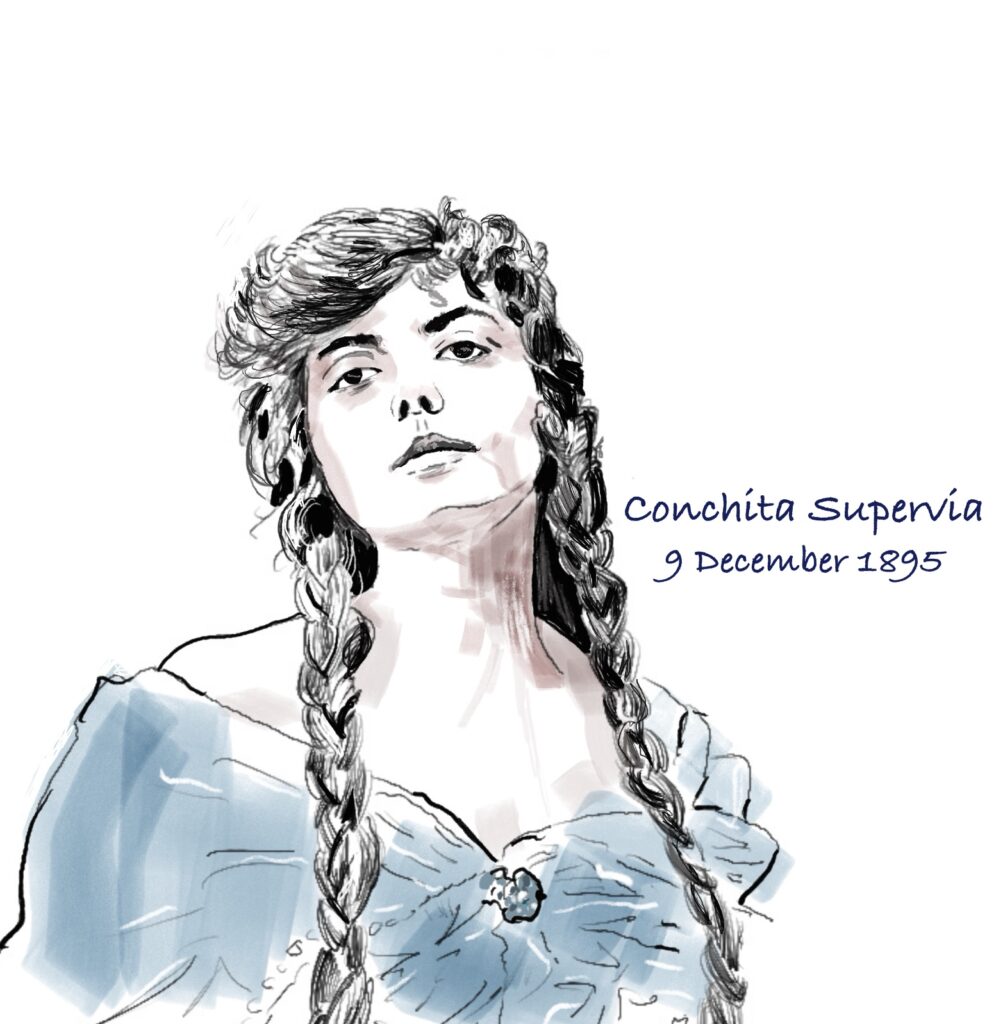
‘There was the adorable Conchita Supervia then, and she was perfection itself as Rosina, Isabella in L’italiana in Algeri, and Cenerentola. She had the charm and humour that went with these roles, along with a dazzling technique despite a small voice. I knew i could not possibly compete with her. ‘ Ebe Stignani
The bright, irrepressibly lively and comet-like career of Conchita Supervia was all too brief. Born in Barcelona on the 9 December 1895, her precocity in her teens meant Supervia started at age 14 in Buenos Aires in 1909 with a touring company and by 16 she was Octavian in the Rome premiere of Der Rosenkavalier. It was as if Supervia knew she had a limited time on earth and urgency was driving her. By 1915 she was already singing in the United States. Her artistry and vocal gifts are well described by J.B.Steane: ‘when Conchita Supervia sings, life quickens. She would challenge and cajole, charm and sigh, wheedle and scowl. The voice would rattle with alarming Southern stridency, yet none could sing a sweeter lullaby. She mixed the colours of her song with daring and intuitive skill: its scents and shades, flashes of scarlet amid pastel tints and delicate half-tones, were a florist shop in themselves, and rivals were soon out of business.’
Listening to her recordings always gives a sense of extreme liveliness. There is a character that can only be described as compelling sweetness combined with a temperament of fire. It was what charmed her contemporaries who were fortunate enough to experience her singing. It is also interesting to note that the recordings display a fast vibrato, which was not evident to those who did hear Conchita sing live.
Her great roles were the Rossini heroines; Rosina, Cenerentola, Isabella (L’italiana in algeri) and then Cherubino, Charlotte, Mignon, Carmen and Hansel It in this last role that Ines Alfani Tellini expressed the regret that the opera ‘has disappeared in Italy, and the current generation does not know of its existence. The most precious Hansel of all was Conchita Supervia, adorable in trouser roles.’
Supervia died in childbirth in 1936. Desmond Shawe-Taylor noted that; ’Supervia possessed exceptional gifts of musicianship and temperament. Her rich and vibrant mezzo attained a high degree of flexibility. Few singers conveyed so keen a pleasure in the sheer act of singing; and her enunciation, in several languages, was extremely vivid. These virtues, combined with a mischievous sense of humour and a delightful stage and platform personality, made her a superb interpreter of Rossini and Georges Bizet, as of Manuel de Falla, Enrique Granados and Spanish folksong.’
As for her personal life, it is known that she was a teetotaller, a non-smoker and looked after her health.
Conchita Supervia lives on because of that sheer infectious pleasure in singing that she brought into the world.
AURELIANO PERTILE, TENOR, NOVEMBER 09, 1885

‘I always had a very romantic concept of music. For me, it was something that came from the soul, something not contrived but spontaneous – lifting you, fulfilling you naturally’. Victoria de los Angeles
Born in Barcelona on this day in 1923 to poor but hard-working parents , Victoria de los Angeles was one of the most loved performers of her time. Her connection with audiences, whether on the opera stage or concert hall podium was the very essence of her art. In her own words, ‘With a good audience, I find that I can do things that I really never believed to be possible. When all you’ve got to sing to is a microphone, there’s none of that human warmth! When I sing in an opera house or a concert hall, I have an intuitive feeling about the audience’s response. That is very important. I gain confidence from them. I find that I can do things for them that I really didn’t believe would be possible. But in a recording studio you really have to forget about that altogether.’
Her beginnings were not auspicious, as by her own report, she was a shy child. It was music and singing that helped her overcome this shyness, and it was her elder sister Carmen that encouraged her to sing and when she was sixteen-years-old entered Victoria in a local vocal competition that nudged her in the direction of considering singing as a career rather than medicine or literature.
She began studies at the Barcelona Conservatorio with Dolores Frau, who was to remain her only singing teacher. To her great good fortune young Victoria came to the notice of a well-connected music-lover and semi-professional musician, José Maria Lamaña, whose father had been at one time President of the Conservatorio, and who performed regularly with Ars Musica. Ars Musica had been founded by Lamaña in 1935 as a seven-piece chamber ensemble with the goal of reviving older Spanish repertoire. Lamaña not only found financial backers from Catalan aristocrats and industrialists to support her studies, but managed Victoria’s burgeoning career, providing her with her style (under-stated with simple gold bracelet, pearl earrings, classical dress), from which she never deviated throughout her long career. Lamaña ‘had no intention of allowing Victoria to sing for money until she was ready. The preparation of a great voice is like the honing of a blade. If the initial work is well and patiently done, the blade will need only a little stropping for it to retain its keenness.’
Her professional debut, nevertheless, was at age 19 in Barcelona as Mimì in La bohème. The year was 1941. Her Madrid debut in 1947, was with non-other than Beniamino Gigli in Manon. It was decided that her Madrid debut needed to be with star quality given her growing reputation. On the back of winning the Geneva Singing Competition in 1947, she was invited to La scala, but in her shyness and desire to be back ‘home’ as soon as possible, she turned down the offer! In the words of her biography she received a phone call whilst in Geneva:
[Oldani] ’We heard the broadcast. Magnificent. We would very much like you to come and sing for us here.’
‘Oh, I’d love to, but I’m afraid I’m going home today. I’ve got my ticket here.’
‘I quite understand, of course, but I am sure we can arrange something. It would only be a brief detour. You could change your ticket and fly back via Milan.’
‘No, thank you. I want to go home. They’re waiting for me.’
‘Um…I don’t think you understand. This is La Scala. We are asking that you come to sing for us at La Scala.’
An incredulous Oldani put down the telephone in Milan.
International success was not guaranteed and indeed her first recital in Scandinavia in a 2000-seat hall had only twenty-seven people in the audience. This was repeated in Latin America when in Brazil a mere twelve people attended. ‘I nearly invited the twelve people there to come up on stage,’ Victoria remembers. ‘It was a lovely concert – pure music-making with friends.’
By 1950 de los Angeles had been invited to Covent Garden, and in 1951 she made her Metropolitan Opera debut and she regularly sang at both houses until 1961.
Her most notable roles were Rosina, Violetta, Madama Butterfly, Mimì, Manon, and Desdemona in the Italian repertoire; Marguerite, Melisande and Carmen in the French and she appeared two years running in Bayreuth as Elisabeth. Her experience at Bayreuth seems to have been one of her happiest professional engagements and her appreciation of Wieland Wagner as a producer was immense as she later commented, ‘In many ways those are the best artistic conditions in which I ever worked.’
What of her voice though? How did those who heard her live react? J.B.Steane wrote, ‘For a start, the voice in its prime was so pure and so opulent. To song after song you could listen with uninterrupted pleasure to the sheer sound, with never a scrape nor a rattle, never a hint of surface wear or anything mean about the quality. But that of itself gives a poor idea, for it tells of what there was not….’ Her colleague, Elisabeth Schwarzkopf said of her, ‘She is quite astounding. She sings with miraculous ease and her legato is unsurpassed. Once in 1952 (or so) I heard her as Violetta and I decided not to sing it again.’ Shawe-Taylor noted that she, ‘possessed a warm, vibrant instrument of unusual clarity and flexibility, somewhat dark and southern in quality but capable of much tonal variety. In her best years the timbre of her voice was exceptionally sweet, and she was a most communicative artist in both song and opera.’
Her rapport with audiences was legendary, but she was also a consummate ‘singing obsessive’. She enjoyed talking about singing and was ever-ready to learn from others; she said of Marian
Anderson, for example, ’I have never discussed singing with anyone as much as with Marian. She was an almost mystic force. What Toscanini was to conducting, she was to singing. I admired her for the simplicity of her approach to singing. Like me, she sang from the heart or not at all. She was also an extraordinarily supportive and generous colleague.’
During the seventies she had almost confined herself to recitals, where she felt more fulfilled with the audience response. As an encore, it was noted that; ’Even then there could be another treat in store, for sometimes instead of bringing Gerald Moore back with her she would return alone but with guitar. ‘Adios Granada’ she would sing: the bold projected middle voice would fill the hall, the sensuous melisma told of dark faces and flickering shadows in a sunny land,…’ She performed the Catalan folk-song, ‘Song of the Birds’, for the closing ceremony of the Barcelona Olympic Games in 1992 and her last concert tour was to Australia in 1995. Victoria de los Angeles died in home town of Barcelona on the 15 January 2005.
VICTORIA DE LOS ANGELES, SOPRANO, NOVEMBER 01, 1923
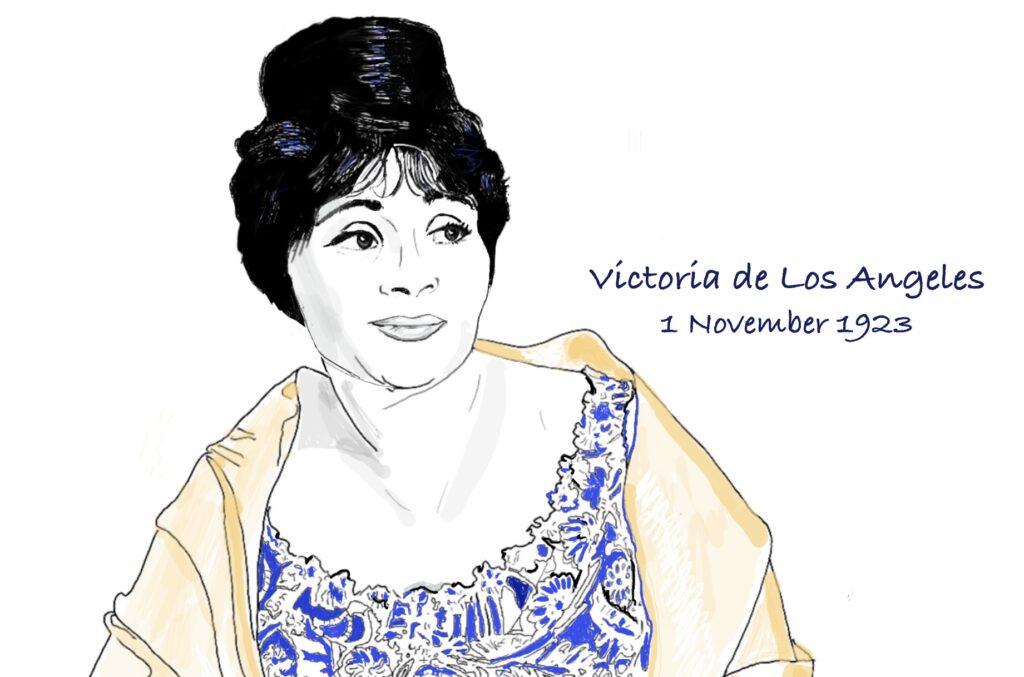
‘I always had a very romantic concept of music. For me, it was something that came from the soul, something not contrived but spontaneous – lifting you, fulfilling you naturally’. Victoria de los Angeles
Born in Barcelona on this day in 1923 to poor but hard-working parents , Victoria de los Angeles was one of the most loved performers of her time. Her connection with audiences, whether on the opera stage or concert hall podium was the very essence of her art. In her own words, ‘With a good audience, I find that I can do things that I really never believed to be possible. When all you’ve got to sing to is a microphone, there’s none of that human warmth! When I sing in an opera house or a concert hall, I have an intuitive feeling about the audience’s response. That is very important. I gain confidence from them. I find that I can do things for them that I really didn’t believe would be possible. But in a recording studio you really have to forget about that altogether.’
Her beginnings were not auspicious, as by her own report, she was a shy child. It was music and singing that helped her overcome this shyness, and it was her elder sister Carmen that encouraged her to sing and when she was sixteen-years-old entered Victoria in a local vocal competition that nudged her in the direction of considering singing as a career rather than medicine or literature.
She began studies at the Barcelona Conservatorio with Dolores Frau, who was to remain her only singing teacher. To her great good fortune young Victoria came to the notice of a well-connected music-lover and semi-professional musician, José Maria Lamaña, whose father had been at one time President of the Conservatorio, and who performed regularly with Ars Musica. Ars Musica had been founded by Lamaña in 1935 as a seven-piece chamber ensemble with the goal of reviving older Spanish repertoire. Lamaña not only found financial backers from Catalan aristocrats and industrialists to support her studies, but managed Victoria’s burgeoning career, providing her with her style (under-stated with simple gold bracelet, pearl earrings, classical dress), from which she never deviated throughout her long career. Lamaña ‘had no intention of allowing Victoria to sing for money until she was ready. The preparation of a great voice is like the honing of a blade. If the initial work is well and patiently done, the blade will need only a little stropping for it to retain its keenness.’
Her professional debut, nevertheless, was at age 19 in Barcelona as Mimì in La bohème. The year was 1941. Her Madrid debut in 1947, was with non-other than Beniamino Gigli in Manon. It was decided that her Madrid debut needed to be with star quality given her growing reputation. On the back of winning the Geneva Singing Competition in 1947, she was invited to La scala, but in her shyness and desire to be back ‘home’ as soon as possible, she turned down the offer! In the words of her biography she received a phone call whilst in Geneva:
[Oldani] ’We heard the broadcast. Magnificent. We would very much like you to come and sing for us here.’
‘Oh, I’d love to, but I’m afraid I’m going home today. I’ve got my ticket here.’
‘I quite understand, of course, but I am sure we can arrange something. It would only be a brief detour. You could change your ticket and fly back via Milan.’
‘No, thank you. I want to go home. They’re waiting for me.’
‘Um…I don’t think you understand. This is La Scala. We are asking that you come to sing for us at La Scala.’
An incredulous Oldani put down the telephone in Milan.
International success was not guaranteed and indeed her first recital in Scandinavia in a 2000-seat hall had only twenty-seven people in the audience. This was repeated in Latin America when in Brazil a mere twelve people attended. ‘I nearly invited the twelve people there to come up on stage,’ Victoria remembers. ‘It was a lovely concert – pure music-making with friends.’
By 1950 de los Angeles had been invited to Covent Garden, and in 1951 she made her Metropolitan Opera debut and she regularly sang at both houses until 1961.
Her most notable roles were Rosina, Violetta, Madama Butterfly, Mimì, Manon, and Desdemona in the Italian repertoire; Marguerite, Melisande and Carmen in the French and she appeared two years running in Bayreuth as Elisabeth. Her experience at Bayreuth seems to have been one of her happiest professional engagements and her appreciation of Wieland Wagner as a producer was immense as she later commented, ‘In many ways those are the best artistic conditions in which I ever worked.’
What of her voice though? How did those who heard her live react? J.B.Steane wrote, ‘For a start, the voice in its prime was so pure and so opulent. To song after song you could listen with uninterrupted pleasure to the sheer sound, with never a scrape nor a rattle, never a hint of surface wear or anything mean about the quality. But that of itself gives a poor idea, for it tells of what there was not….’ Her colleague, Elisabeth Schwarzkopf said of her, ‘She is quite astounding. She sings with miraculous ease and her legato is unsurpassed. Once in 1952 (or so) I heard her as Violetta and I decided not to sing it again.’ Shawe-Taylor noted that she, ‘possessed a warm, vibrant instrument of unusual clarity and flexibility, somewhat dark and southern in quality but capable of much tonal variety. In her best years the timbre of her voice was exceptionally sweet, and she was a most communicative artist in both song and opera.’
Her rapport with audiences was legendary, but she was also a consummate ‘singing obsessive’. She enjoyed talking about singing and was ever-ready to learn from others; she said of Marian
Anderson, for example, ’I have never discussed singing with anyone as much as with Marian. She was an almost mystic force. What Toscanini was to conducting, she was to singing. I admired her for the simplicity of her approach to singing. Like me, she sang from the heart or not at all. She was also an extraordinarily supportive and generous colleague.’
During the seventies she had almost confined herself to recitals, where she felt more fulfilled with the audience response. As an encore, it was noted that; ’Even then there could be another treat in store, for sometimes instead of bringing Gerald Moore back with her she would return alone but with guitar. ‘Adios Granada’ she would sing: the bold projected middle voice would fill the hall, the sensuous melisma told of dark faces and flickering shadows in a sunny land,…’ She performed the Catalan folk-song, ‘Song of the Birds’, for the closing ceremony of the Barcelona Olympic Games in 1992 and her last concert tour was to Australia in 1995. Victoria de los Angeles died in home town of Barcelona on the 15 January 2005.
TITO GOBBI, BARITONE, OCTOBER 24, 1913
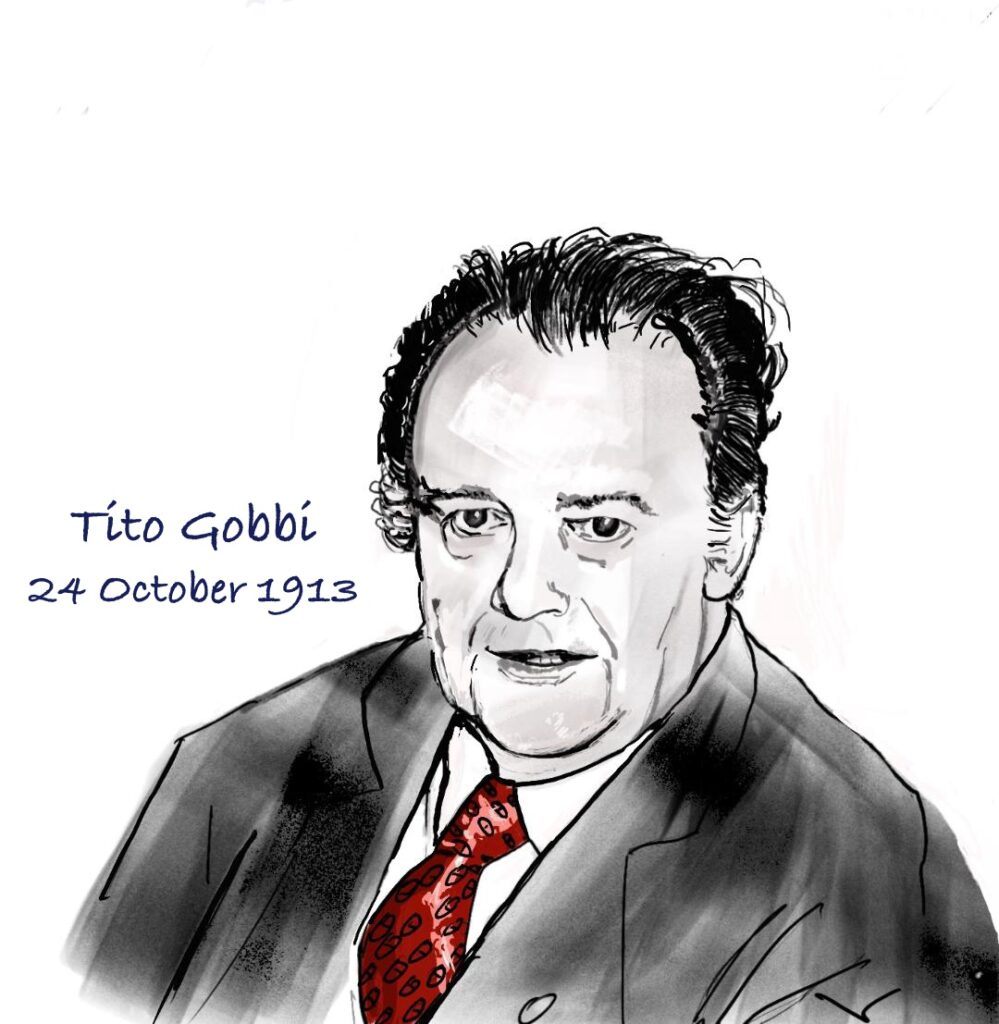
‘The first time anyone noticed my voice was when I was at elementary school, which was the first stage of our education. Our singing teacher was preparing us for an end-of-term performance to take place before the general inspector and our parents. We were to do a sort of chorus of national songs, and at one of our rehearsals our teacher, Maestro Bevilacqua, started going around the class muttering to himself. Finally he stopped in front of me and exclaimed: ‘You’re the culprit! You’re shouting like a mad dog – its terrible! You keep silent. But as we don’t want the inspector to know you are not singing, simply open and shut your mouth and pretend to sing.’’ Tito Gobbi
Such was the vocal debut of one of the greatest operatic baritones of the twentieth century, and one of the most admired interpreters of the classic Italian repertoire, who dominated the stage with his presence, acting and vocal intelligence.
Tito Gobbi was born on the 24th October 1913 in Bassano del Grappa , a true son of the Veneto, to a successful mercantile family of the region that traced its presence there for centuries. The potential of his voice however, was noticed by a family friend, Baron Zanchetta hearing him sing, looked out the window and asked who was singing. The Baron summoned young Tito and told him he was a baritone and should seriously consider singing as a profession. At this stage, young Tito had never given thought to it, having considered himself more a painter, but ‘the Barone had planted the first germ of an idea in my mind, and he even gave me a few basic singing lessons.’ Tito accompanied his father to Rome for an opinion from the great Sicilian tenor, Giulio Crimi, who heard something in his voice, but recommended three months to see if there really was a vocal talent to work with. In this period of his life Tito supported himself by painting Roman subjects for tourists, which gives a small indication of his artistic talent. He also met his wife, who was an accompanist for Crimi and eventually Crimi took Tito into the household, believing he had the gifts and temperament of a great singer.
There were a number of ‘false starts’ to his professional career. Most depressingly in 1934 as the Count in La sonnambula in Gubbio which his family and Crimi attended. When Tito tentatively asked about the performance, Crimi’s response was, ‘My address,’ he replied grimly, is so and so. If you think you had better go on studying, come and see me tomorrow. Otherwise – good-bye.’ A short spell of study followed at La Scala where according to an amusing anecdote in his autobiography, much to his embarrassment, he fluffed his one line appearance as a Herald in Simone Boccanegra by coming in thirty seconds too early.
Better fortune was to follow when he stepped in at the Teatro Adriano in Rome in 1937 to sing the part of Germont. It was this appearance that brought him to the attention of Tullio Serafin who auditioned him and brought him into the Teatro Reale in Rome. Serafin was a great inspiration and taskmaster. Gobbi wrote, ‘He was utterly generous when generosity was called for, but equally he was ruthless if the situation demanded it.’ According to Gobbi, ‘The regime of work was severe. During my first six years at the Teatro Reale I learned sixty-six roles, not actually singing all of them on the stage of course but learning them in depth and sometimes ‘covering’ for more experienced singers.’ From 1938 he began to sing regularly at the Teatro Reale. His first great success was in a piece one does not normally associate with a great interpreter of Verdi and Puccini; in 1942 he played Wozzeck in the Italian premiere of Berg’s eponymous opera.
Following the war he made his first international appearances in Stockholm (1947) and the USA (1948), and his international reputation grew with the roles of Boccanegra, Posa, Iago, Rigoletto and Falstaff. He also most memorably was the Scarpia to Callas’s interpretation of Tosca and we are thankful to the black and white film made of the second act of Tosca to have a glimpse of how they both captivated an audience with their interpretative ability. Ever a thoughtful performer, his stage presence, charisma and acting ability was phenomenal. Those that saw and heard him during the 40s, 50s and 60s gave glowing reports: ’intelligence, musicianship and acting ability, allied to a fine though not large voice, made Gobbi one of the dominant singing actors of his generation.’ J.B. Steane wrote, ’Gobbi’s voice was one of the most beautiful I ever heard. If the reader rightly detects a note of defiance in that, it must be because both of us know that beauty of sound was not among the qualities most conspicuously attributed to him.…he paid the usual price of the actor-singer…people were so busy looking at him that they almost forgot to think about what they heard.’ And perhaps what is the greatest compliment of all, ‘…if the genie of the magic lamp or the operator of the time-machine were to offer a voyage back to hear one voice from the past ‘live’ experience, I would ask for Gobbi.’
Gobbi made numerous recordings and also appeared in twenty-six films. In 1965 he was invited to produce a Simone Boccanegra at Covent Garden and Chicago which launched a second career as an opera producer. His views on opera production align with his dramatic sensibility: ‘my first feeling is one of responsibility towards the composer and the librettist. I do not aim at headlines proclaiming, ‘“Tito Gobbi’s controversial production”. I have no ambition to read in any newspaper, “A piquant experience awaited us at the Opera last night, for when the curtain rose on Tito Gobbi’s production of Otello we found ourselves in the world of Watteau” (or Breughel, or God knows who). My simple intention is that the audience should find themselves on such an occasion in the world of Verdi and Shakespeare.’
A man of many gifts, he was generous and fair with his colleagues. When he acted as a manager and arranged a concert with Beniamino Gigli, he refused to take any commission. Gigli was so impressed with Gobbi’s integrity, he returned the favour by singing gratis at a benefit concert in Bassano. He gave singing master classes, was a fine painter, and authored two essential books; his autobiography and ‘Tito Gobbi on his World of Opera’ in which he outlined his interpretation of roles and thoughts on singers and singing.
He passed away in 1981.
EPISODE 15 CELEBRATING LUCIANO PAVAROTTI’S 90TH BIRTHDAY
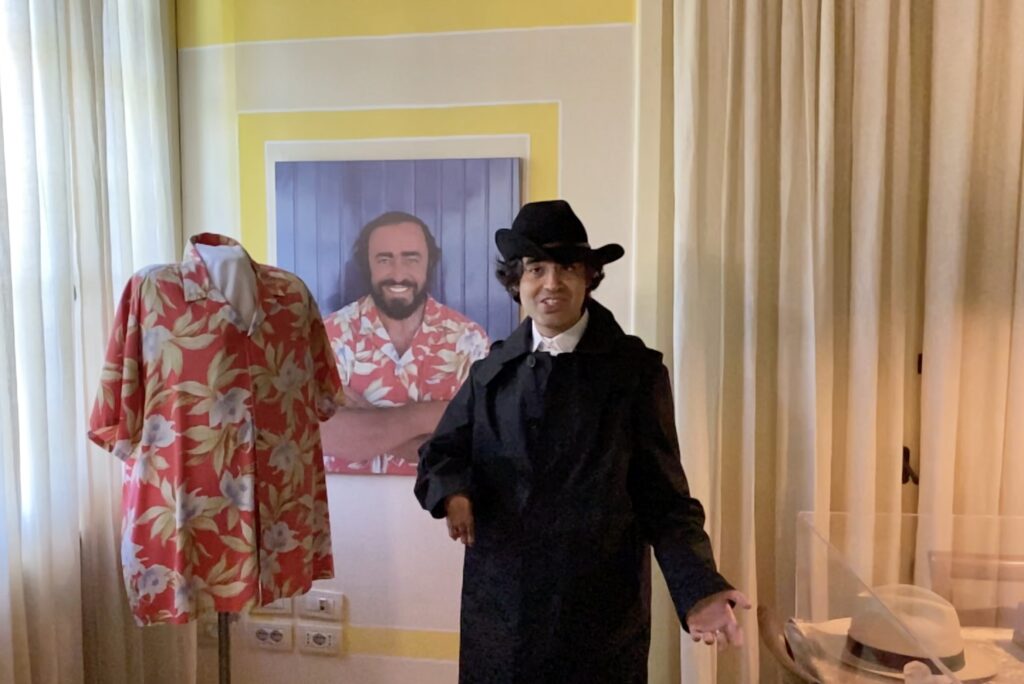
Today, the October 12, 2025, marks the 90th birthday of my childhood tenor vocal hero, Luciano Pavarotti. Join me, Gyaan Lyon aka The Voice Detective on this special episode of The Voice Detective Show as I go on the trail of the legendary Maestro’s life, in his hometown of Moderna, Italy.
You can also read my tribute article to Luciano Pavarotti in the Legendary Singers Anthology
GYAAN LYON LAUNCHES HIS ARTIST WEBSITE ON LUCIANO PAVAROTTI’S 90TH BIRTHDAY
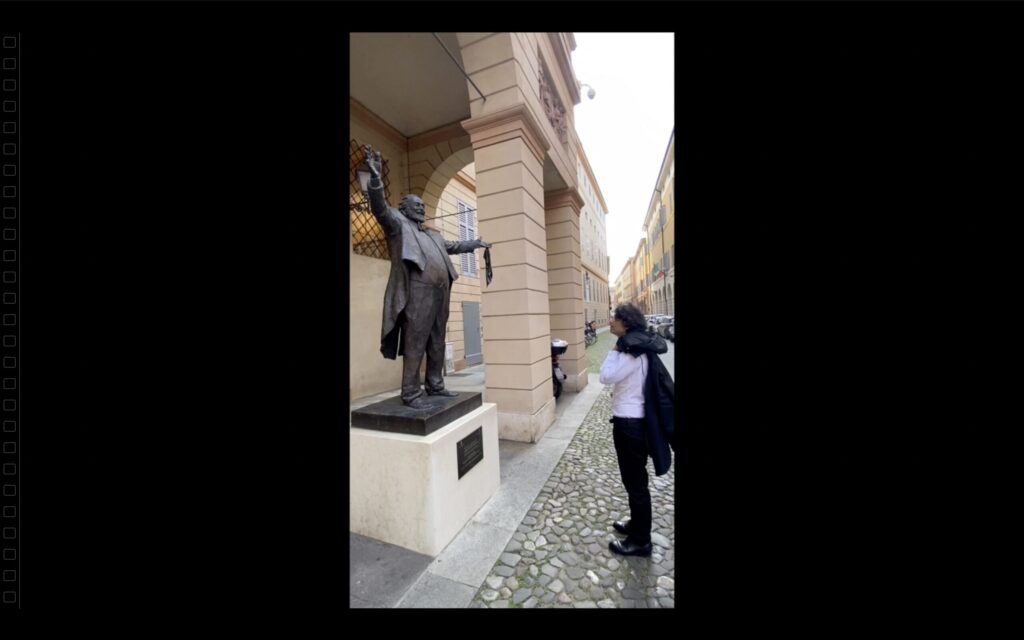
Today, October 12, 2025, I am launching my personal website as a tenor, performing artist, musician, songwriter and artist on the 90th birthday of my childhood tenor vocal hero Maestro Luciano Pavarotti.
MEHR LESEN
LUCIANO PAVAROTTI, TENOR, OCTOBER 12, 1935
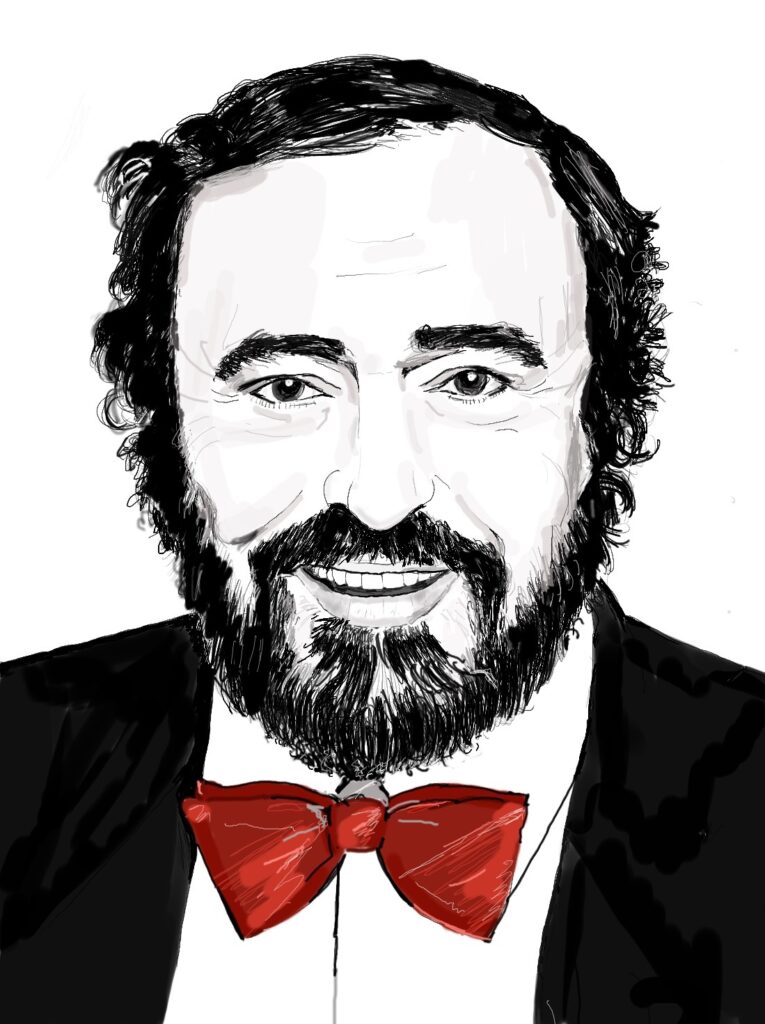
‘I want to reach as many people as possible with the message of music, of marvellous opera.’ Luciano Pavarotti
‘When it comes to singing, Luciano Pavarotti had as good an explanation for being “special” as any I ever heard. He said that his vocal cords were “kissed by God.”’ Marilyn Horne
These two quotes epitomise Luciano Pavarotti the performer. The first describes, what Luciano Pavarotti’s mission statement was and remains as the Luciano Pavarotti Foundation’s own mission; and the second, the sheer wonder of a singing colleague for the man’s vocal gifts. What they do not reveal is the generosity of the human being, his tireless support of charities, worthy causes and young singers.
2025 marks the ninetieth birthday of this great human being. His legacy lives on in the Luciano Pavarotti Foundation, which is based in his home just outside of Modena. The Foundation has the mission to promote young talented singers. This continues the generosity of the Maestro himself who ‘gave free singing lessons to many students he considered promising. He loved teaching, he used to say that sharing his experience and passion with young people was his way of thanking for the great gift he received, namely his voice.’ Today, the Foundation carries on Maestro Pavarotti’s activity following the same path he has traced, offering opportunities and visibility to the young up-and-comers of opera, also trying to make the course of study and training accessible to all.
Cognisant of the great gift he had received in his voice, with the immense professional success and recognition achieved through his art, and these had created a public stature like no other classical singer, he spread his charitable work further and wider through the Pavarotti and Friends series of concerts beginning in 1992 until 2003. Proceeds from the events were donated to humanitarian causes including the international aid agency War Child and the United Nations High Commissioner for Refugees. He also performed for immediate emergencies, such as benefit concerts to raise money for victims of tragedies such as an earthquake in December 1988 that killed 25,000 people in northern Armenia. All in all, Luciano was larger than life as a personality and yet a simple man concerned with the well-being of all people.
And what of bringing opera to the people? The English vocal connoisseur J.B Steane perhaps summed up Pavarotti’s achievement most poignantly, for the “(people who would never go near an opera house if they could help it), Pavarotti was the embodiment of the Italian tenor. ‘Pressed they might say, ‘Yes, you have to admit it, it did send a bit of a shiver through you when he sang that “Nessun dorma” thing at the World Cup.’ They might even, if pressed further, acknowledge that quite probably no other sound on earth could have been there and then, at that moment, so right and so thrilling. They like the look of him too: the generous size, the comfortable shape, the beard, the teeth, the feeling that there may be ‘something in it’, a feeling they have probably never entertained before.” A perfect testimony to the man’s appeal and effect.
Finally, how did Pavarotti himself feel when performing? The most moving description is given by the great American bass, Jerome Hines. Hines was singing with Pavarotti at his Metropolitan Opera debut in 1968in Puccini’s La bohème. Pavarotti had been suffering with a throat infection but knowing it was “now or never” decided he had to sing. Hines words then: ‘Our tenor’s voice held up very well to the end of the opera and he was very simpatico on the stage, but he was not happy about his performance. When the final curtain fell and it was time for Luciano’s solo bow, he took a deep breath, mustering his courage to face that ultimate critic – the public. As he stepped in front of the curtain, he was greeted with a roar from the audience, and deservedly so. At first, he did not bow, but stood there looking dazedly at the people while slowly the overwhelming accumulation of nerves and tension manifested itself in the tears which began running down his cheeks. He remained immobile amid the storm of applause for at least half a minute – just crying. Then, after one quick, humble bow, he hurried into the wings to find us all waiting with tears in our eyes too.’ The final part of the text is italicised for emphasis. Here, truly was a singer who moved others with his art, and had himself a great heart.